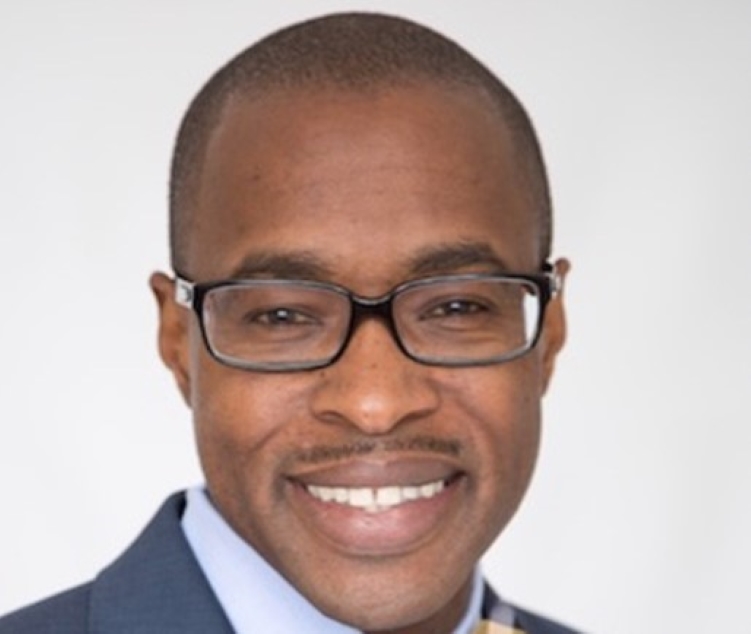
Andrew Campbell, MD, is a distinguished leader in the field of sickle cell disease research and treatment. Currently serving as the director of the Comprehensive Sickle Cell Disease (SCD) Program at Children’s National Hospital in Washington, DC, Dr. Campbell has established one of the largest SCD programs in the country. His academic journey began at Morehouse College and continued at Case Western Reserve School of Medicine, followed by pediatric residency training at Massachusetts General Hospital, affiliated with Harvard University. He further specialized in pediatric hematology/oncology through a fellowship at Northwestern University’s Lurie Children’s Hospital.
Dr. Campbell’s expertise is recognized internationally. He has delivered lectures and presentations on sickle cell disease around the globe, including a notable address at the September 2023 Science Summit at the United Nations General Assembly, focusing on gene therapy for SCD. His extensive research portfolio includes over 90 publications in peer-reviewed journals, emphasizing the clinical complexities of sickle cell disease across different populations. Dr. Campbell also plays a pivotal role in advocacy, contributing to several legislative efforts to improve care for SCD patients.
In this “Health IQ” interview, Dr. Campbell shares his insights into the latest advancements in sickle cell treatment, the critical importance of community awareness, and his global health initiatives to combat this genetic disorder.
[Editor’s note: This is a truncated transcribe of a longer video interview. Please see the video for the extended version. Some errors may occur.]
Munson Steed: Could you update us on where we stand concerning sickle cell?
Dr. Campbell: First of all, as many of you know, sickle cell disease is a condition that affects red blood cells. It changes the red blood cells from their usual round shape to a crescent moon or banana shape, which blocks blood vessels and causes organ damage. But most importantly, it results in a poor quality of life, repeated pain episodes, and, in some cases, a shortened lifespan.
Over the past 110-plus years, from the discovery of sickle cell disease in 1910 in the Western Hemisphere to 1998, there were no FDA-approved drugs. [In 1998] Hydroxyurea was approved as a medication that decreases painful episodes by reactivating what’s called fetal hemoglobin. We’re all born with fetal hemoglobin, but it gets shut off when we’re born. This drug turns it back on, increasing fetal hemoglobin and reducing sickle hemoglobin, making sickle cell much milder, with less pain and fewer complications, including less organ damage.
From 1998 to 2017, there were no additional drugs. In 2017, the FDA approved hydroxyurea for children… In November 2019, two drugs were approved: one called Oxbryta (Voxelotor) by Global Blood Therapeutics, which increases hemoglobin, and Crizanlizumab, or Adakveo, which was approved to help prevent pain crises. Adakveo is a once-a-month infusion, and there’s another drug called Endari that was approved to help decrease pain.
Up until that point, these disease modifiers were available for children and adults to help decrease the complications associated with sickle cell disease.
Now, as you probably know, there are curative, transformative therapies available. First, there’s bone marrow transplant, where you can get a “cure” for your sickle cell disease if you find a matched sibling or parent to be your donor. Basically, you replace your bone marrow, which produces sickle cells, with donor marrow that does not have sickle cell. That’s a traditional curative option we have right now for sickle cell disease.
There are also new options called gene therapy that have been FDA-approved. In December 2023, two gene therapy products were approved. You have to be a certified gene therapy center to administer these treatments, and there are many components to it. But the great thing about this is it’s a significant win for sickle cell, as science has now caught up with this condition, resulting in transformative outcomes for patients’ lives if they receive this treatment and it works.
That’s pretty much the current state of treatments in the United States. In addition to hydroxyurea, we also offer blood transfusions for patients who become more anemic or get sick. We administer IV fluids, pain medications, and sometimes strong opioids because the pain can be so severe. Right now, we also have the new gene therapy treatment that has really excited the sickle cell community.
When you think about the patients you serve and the individuals in the community, what more can we do to educate our community? How can we support those with sickle cell, and should we know our family history related to sickle cell?
For the first question, in terms of helping someone suffering, just being supportive is crucial. Acknowledging their pain and validating their experience is important. Many people don’t believe sickle cell patients, leading to healthcare disparities, especially in emergency rooms. So if you’re a healthcare provider, nurse, or anyone working in a healthcare system, and you encounter a sickle cell patient, be compassionate. If you know someone with sickle cell in your community, be compassionate and understanding. If they work for you, be considerate of the unanticipated pain events and disruptions they might experience. Sickle cell warriors are some of the strongest and most dependable individuals I’ve met, often working through their pain. So, be supportive and understanding, whether at school, work, or elsewhere.
As a community, we can raise awareness about sickle cell disease. Sickle cell disease is still here, affecting one in about 350 to 365 African American births and one in 16,000 Hispanic births. It’s included in newborn screening in all states and territories in the United States. If you have a child, you need to know their newborn screening status. Know your sickle cell status, as well. It’s essential because it educates the community and is crucial when entering any relationship to pass on to your partner.
Legislatively, supporting bills that advocate for sickle cell disease is important. There are sickle cell organizations and bills that have been presented to Congress and the Senate, some of which have passed. Talk to your local congressmen, women, and senators, even at the state level, about passing legislation to increase access to care. This includes ensuring sickle cell patients have equitable access to treatment during a pain crisis, regardless of where they live.
Supporting organizations that assist our sickle cell warriors is vital. Many of our patients frequently go back and forth to the hospital. Supporting organizations like the Sickle Cell Association of America or local organizations can provide crucial resources, such as transportation to the hospital, help with hospital bills, and easing the financial burden for families affected by sickle cell disease.
As for family history, it’s essential. Even in 2024, we still encounter new patients and families who say they didn’t know they had sickle cell disease in their family. This is in the United States, where newborn screening is available. However, we also see many patients from sub-Saharan Africa and the Caribbean who may not be familiar with newborn screening. Education about newborn screening and knowing your status is crucial. But more importantly, it’s essential to openly discuss sickle cell disease within your family. Some people may not want to share this information, but at least within your family, it’s vital to communicate that there’s a sickle cell carrier gene.
There are different types of sickle cell genes, often referred to as sickle cell syndromes. The most common form is when both parents pass on the sickle cell gene, known as SS, which results in sickle cell disease. However, there are other forms. For instance, a person can carry one sickle cell gene and one gene called C. This combination is known as SC sickle cell disease. People who carry the C trait have one normal gene and one abnormal gene—AS is normal, while S is sickle, and AC, A is normal, while C is abnormal. If both parents carry these genes, there’s a 1 in 4 chance that their child could have SC sickle cell disease.
Passing this information to other family members is crucial for erasing the stigma associated with sickle cell trait and sickle cell disease. Many people don’t understand how it’s inherited. For example, when I consult with patients, I’m often asked, “How did I get it? Can you catch it?” The answer is no; it’s not an illness you can catch; it’s something that’s passed on through genes. This lack of understanding is not the fault of the families, as sometimes pediatricians or community-based organizations that are not focused on sickle cell don’t provide this information.
When we think about healthcare, health fairs, and disseminating information to the African American community or other communities, it’s crucial to ask, “Do you know your sickle cell status?” This question should be communicated through all avenues, including social media, to educate our families and communities.
Why are you so dedicated to our community? Why do you continue to fight against disparities, especially when the system isn’t always built to support you or is biased against our community?
It started when I was a medical student. I remember caring for a sickle cell patient and witnessing the unrelenting pain they were suffering. That experience left an indelible impression on me. When I began my hematology and oncology rotation, I became more and more connected to sickle cell disease. I saw significant disparities, barriers to care, and minimal treatment options for the number one genetic condition on the newborn screening. It’s a condition that has been neglected, and if you look at history, there has been a lot of bias and healthcare disparities, particularly affecting sickle cell patients. I saw it during medical school, during my residency, and in my first and second jobs. It’s still present, although it’s lessened somewhat.
I feel that I’m someone our sickle cell warriors can count on to help dismantle these barriers and raise awareness when there is bias or healthcare disparity. It’s an honor and a privilege to care for our sickle cell warriors. They inspire me because, although I cannot see through their lens, I can imagine the burden they carry as they navigate school, the workforce, college, and even parenthood. I want to be an advocate for them, ensuring that curative therapies like gene therapy are available to those who want them and that patients can participate in clinical trials if they choose.
Gene therapy is wonderful, but it will only reach about 5% of our population, maybe 10% at most. We need more disease-modifying therapies that can change the quality of life for all our patients, offering them options. Sickle cell disease is a terrible blood disorder, and it’s not something we want any of our children to endure. I was just at the hospital, rounding as the senior doctor, and I saw our patients suffering in 2024. We still have a long way to go, but there is hope with curative-like therapies, new drugs, and other treatments on the horizon. I want to be there when these become available because, without access, it doesn’t matter how many therapies we have. That’s why I continue on this mission to improve the lives of sickle cell disease patients.
link





